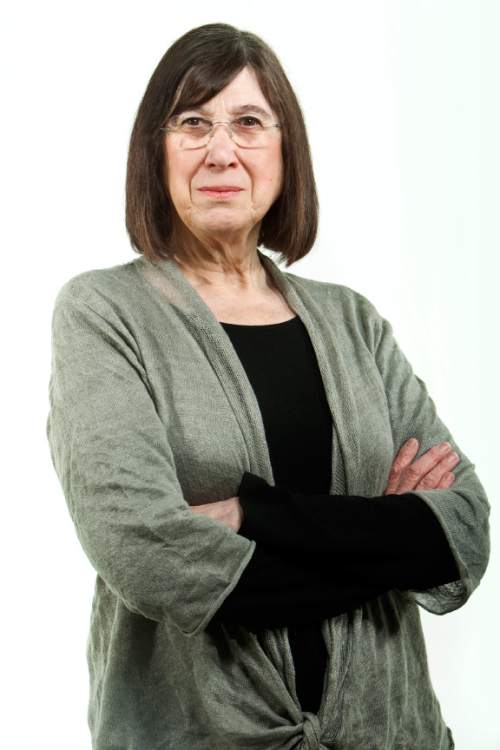This is an archived article that was published on sltrib.com in 2015, and information in the article may be outdated. It is provided only for personal research purposes and may not be reprinted.
The second of two parts
For five years in Nazi Germany, Max and Margaret Lichenheim feared for their lives. Prohibited from practicing law in April 1933 and imprisoned after the 1938 anti-Jewish pogroms known as Kristallnach raged throughout the country, Max knew it was only a matter of time.
When his aunt procured his release by providing proof of passage on a ship out of Germany — according to the U.S. Holocaust Memorial Museum, Nazi policy still "encouraged Jewish emigration" then — Max sold parts of his valuable foreign stamp collection and bought Margaret a companion ticket to the open port city of Shanghai.
Carrying passports stamped with "J" for Jew, the Lichenheims visited Max's beloved aunt in Berlin on April 18, 1939. They then traveled to Munich to board the train to Genoa, Italy.
"Munich was Hitler's headquarters and the real center of activity, so we were very much afraid and careful," Margaret recalled in family papers. "But when we arrived in Genoa, we were free human beings. No one knew our history. [I remember] eating ice cream."
On April 20, the Lichenheims joined some 700 other Jewish refugees and sailed to Shanghai on the luxurious SS Guilio Cesare. A 25-day journey, the couple often lounged on deck chairs. They saw Mount Vesuvius "smoking," Mount Etna looming in the background, and the Suez Canal so narrow, Margaret recollected, "you could almost put your hands out and touch the banks."
Landing in Shanghai, they were shocked by the sights, sounds, and smells of one of the world's largest harbors — populated by three million people — and disoriented by the "foreign" language; the cacophony of traffic, cars, rickshaws, and motorbikes; the overpowering scent of human sweat, garbage, gasoline, opium drafts; and the prevailing association with crime and prostitution.
"We were put on trucks and taken to a Heime [home], a primitive building with hundreds of bunk beds, no washing facilities, no privacy," Margaret said. "Max slept upstairs. I slept downstairs."
Shanghai was home to a small affluent Jewish community that immigrated in early 1862. By the late 1930s, the Chinese city was host to more than 22,000 Jewish refugees. Arriving nearly penniless, they relied on Jewish organizations, such as the Committee for the Assistance of European Jewish Refugees funded by the Joint Distribution Committee (JDC) in New York, for food, housing and healthcare. It was a challenging undertaking. JDC appropriations escalated from $5,000 in 1938 to $100,000 by 1939.
After registering with the International Committee, Max sold more of his valued stamp collection. The couple rented a single room.
"We had bed bugs, but we had privacy," Margaret recounted. She also had a letter of recommendation and found office work in a German-owned firm.
"The business was in the International section of town," she said. "The weather was hot, humid and quite a walk. I had to wear nice clothes for work and so re-dressed when I got downtown."
Sent to the firm's office in Manchuria, the couple returned to Shanghai under Japanese occupation. Max sold cigars, taught German, and practiced law. Later the couple worked for the U.S. Air Force. In 1948, they left for San Francisco and finally settled in Utah.
Enamored with Utah landscapes, the Lichenheims hiked mountain trails. They toured national parks. Receiving compensation from Germany, they imbibed cultures and became fearless world travelers.
Until his death in 1982, Max's stamp business thrived in the Felt Building in downtown Salt Lake City. He was esteemed by the country's top stamp collectors, and at the same time, had an impact on Utah young people.
"I was a 10-year-old kid, mowing lawns in Sugar House and earning $5 a week," says Midvale resident Jerry Clark.
"For 5 cents, I'd hop on the bus, visit Max's office, and talk stamps.
Max quickly became Clark's mentor. "He taught me not only about a stamp's catalogue value, but its history and origin, its composition and quirks," Clark said. "No wonder I got hooked on stamps."
Eileen Hallet Stone, author of "Hidden History of Utah," a compilation of her Salt Lake Tribune Living History columns, may be reached at ehswriter@aol.com. On-line Sources: http://www.jewsofchina.org and U.S. Holocaust Memorial Museum's "German and Austrian Jewish Refugees in Shanghai."



